Spotlight on Daniella Zalcman
Jan 23, 2016
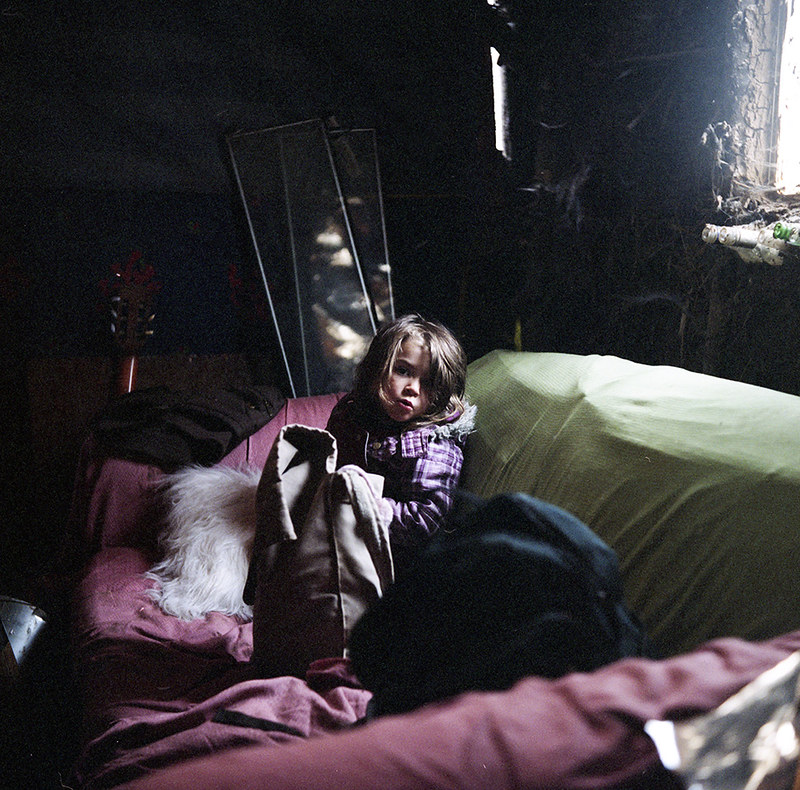
TID:
Thanks for being open to this, Daniella. This is an intriguing image, can you please tell us a little of the backstory?
DANIELLA:
2015 began quietly for me, work-wise. I didn't have any open personal projects, and I wasn't getting much commissioned work. So I began poking around online, searching for a good local London story to work on instead of twiddling my thumbs. I'd been inspired recently by Antoine Bruy's photos of WWOOFing communities throughout Europe, and wanted to look into what off-grid communities existed in the UK. It turns out, there are loads. So I found the one closest to me, Runnymede Eco Village, which lies about 20 miles west just outside of London proper, and spent the next 7 months or so photographing there.
This photo is of Rosie on her second day living in Runnymede. Rosie, her sister, and her mother only joined the community for a few months, but it was pretty amazing to watch a three-year-old transition from being a shy toddler used to living in an apartment to an adventurous, self-sufficient kid running around a woodland.
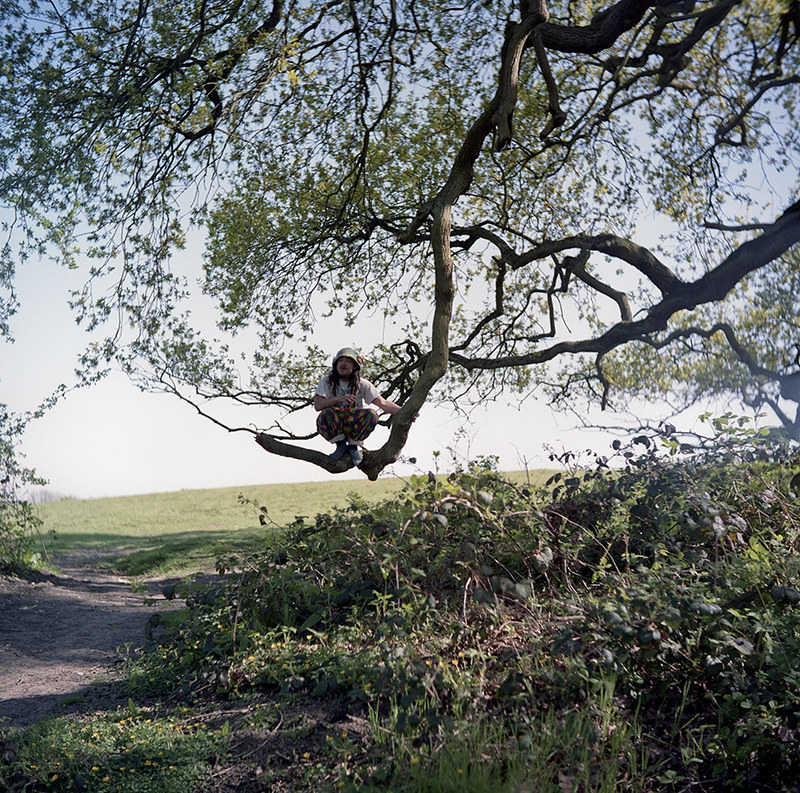
TID:
How did you first start on this, and how did you gain access initially?
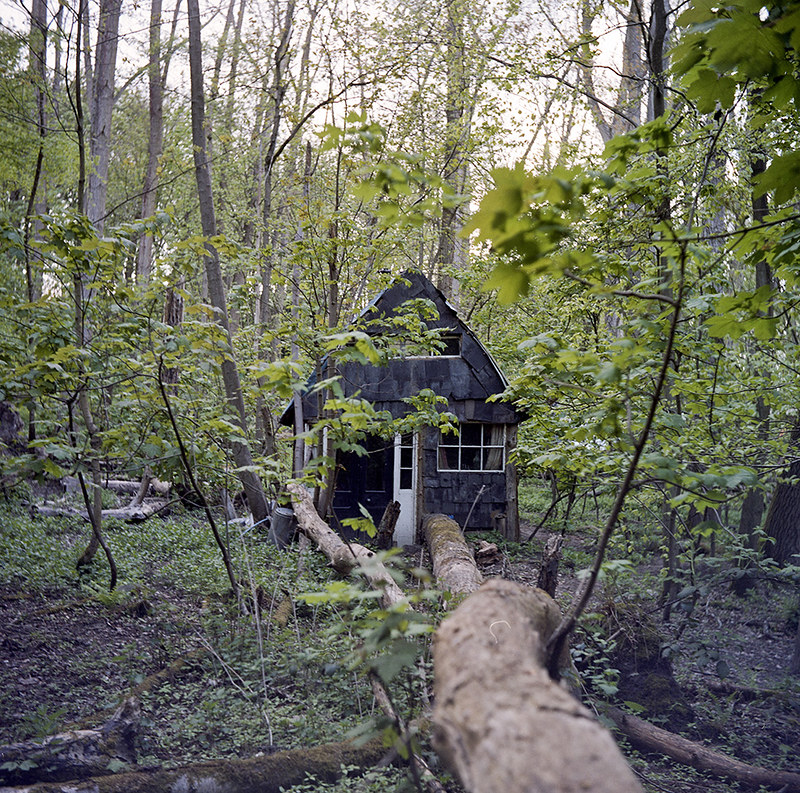
DANIELLA:
I chose the community itself largely at random — I wanted a place that was accessible enough that I could wander out there on slow days in London, and Runnymede is less than an hour away from where I live on public transportation. Half the battle with photojournalism is access, and the stories I tend to work on in particular frequently involve a fierce amount of politicking or trust-building before I can pick up my camera. But with Runnymede, I have to say, I've never encountered a more welcoming or friendly group of people.
I happened to show up for the first time on a day when most of the village was out visiting another intentional community in need of support, and only a handful of people were around. It was also the dead of winter, when numbers tend to drop a little because of harsh living conditions, so I wandered into this seemingly empty settlement in the middle of a forest. It was kind of magical, but also a little terrifying because I felt like I was intruding. I finally noticed a bit of smoke coming from one of the benders (the term they use for their houses, usually built from woven tree branches and recycled or found materials), knocked on the door, and made my first friend in the community. She happened to be a 60-something Australian painter — not at all what I was expecting — and is a complete riot.
That's not to say that everyone welcomed me instantly — a few of the teens in particular were a little wary of me — but after I started showing up repeatedly, bringing prints of photos I'd taken, and slept in the village a few times, even they warmed me to eventually.
TID:
Once you gained access, how did you maintain access? I’m always impressed/curious how photographers maintain access into self-contained groups.
DANIELLA:
I spent a LOT of time in the village. Whenever I was in London I'd go out at least once a week, often more. One of the guys there, who goes by Rainbow James, frequently left on weekends to go visit his girlfriend in London, so he'd let me sleep in his bender whenever I didn't feel like taking the train back in to London. The village's social life revolved around a fire pit at the bottom of the hill, just outside the communal longhouse, so I spent most of my time there, hanging out, drinking tea (you can't bond with Brits if you're not drinking tea), listening to all the residents tell me about their lives and how they ended up there.
There was always the occasional journalist coming through — especially a couple months into my time there, once the community received a formal eviction notice and started a protracted legal battle — but they only ever stopped in for an hour at a time and remained clear outsiders, interlopers, even. I know this somewhat defies a more traditional journalism ethos, but I did everything I could to become part of the community — I helped cook, I did dishes, I planted, I weeded. I tried really hard to figure out what these guys were about. I think they understood how hard I was trying, and it meant a lot to them.
TID:
You mentioned that one of your favorite images was the mirror image. Can you tell us why and expand on what it represents to you?
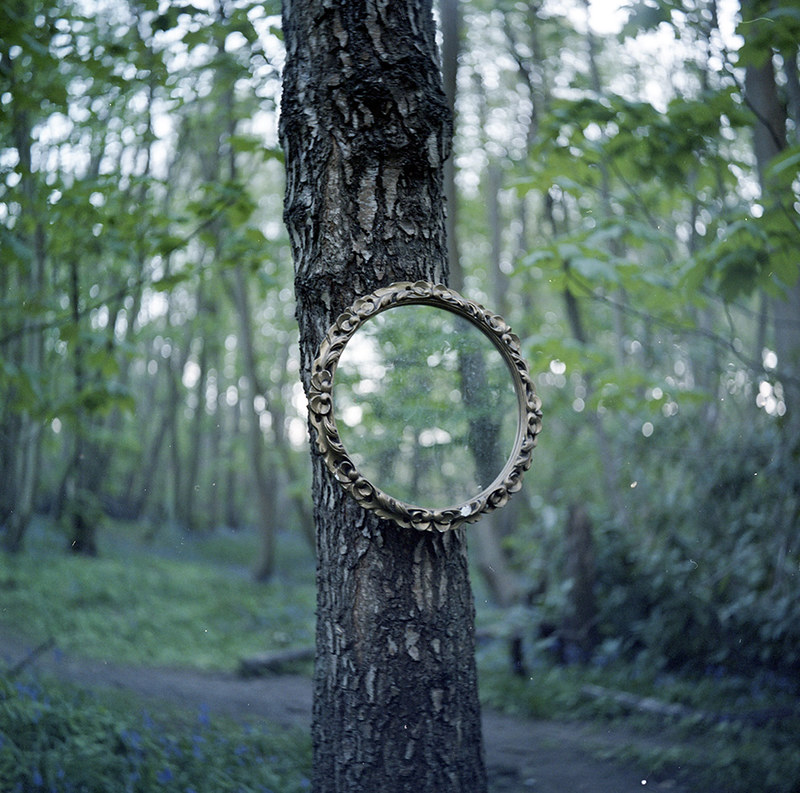
DANIELLA:
There were a lot of beautiful objects in the village, but this mirror was by far my favorite. Vinny had it hanging on a tree across from his bender, and used it to shave every few days. I took this particular photo during bluebell season, a two-week long period when the entire forest was carpeted in delicate lavender flowers. It was just spectacular. But I probably have a dozen different photos of it at different times, in different lights and seasons, and it's always beautiful. This might be a bit of a stretch, but it kind of sums up how I saw the eco village — a gentle reflection of the surrounding environment, not trying to stand out too much or be too different, just hoping to blend in.
TID:
Regarding the lead image. Can you talk about the minutes leading up to the main frame, and what was going on in your mind at the same time?
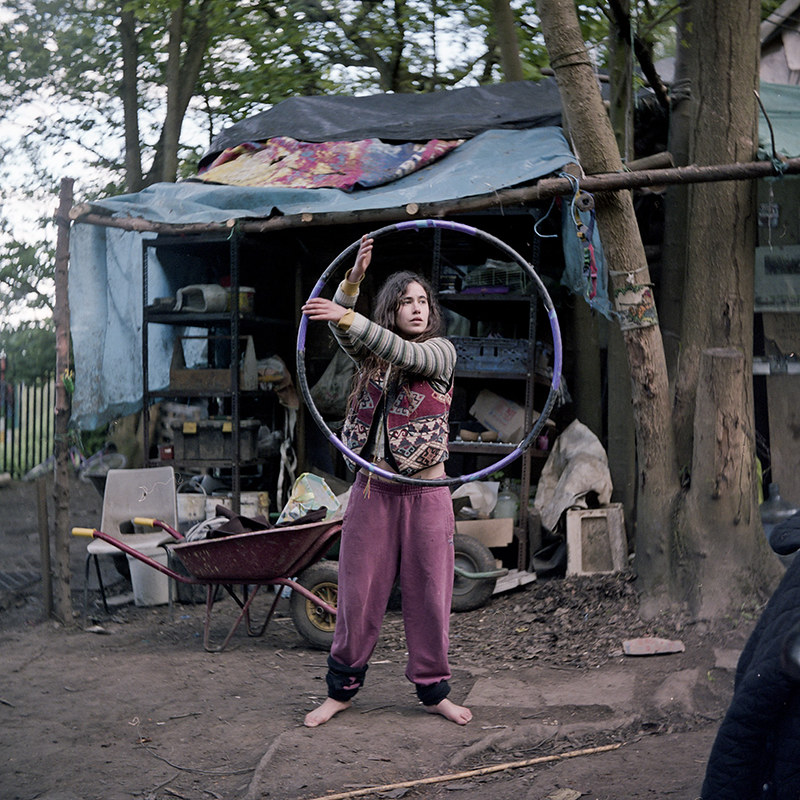
DANIELLA:
I was still pretty new to Runnymede at that point, I'd never met Rosie or her mother before, and wasn't really sure how comfortable they'd be with me photographing them. I also generally avoid shooting in low light with my Yashica, it's just not great in dark settings, so this wasn't exactly a promising photograph in the making. But I'd been thinking a lot about how the children in Runnymede were growing up in different ways, and how much I wanted to explore the difference between their social and intellectual development compared to kids in a more typical urban environment. So this was one of the rare occasions where I took a photo of someone in Runnymede without having extensively interacted with him or her first.
One of the things I love most about shooting with a TLR is that people don't totally understand how it works, and because it has a waist-level viewfinder, I can pretty easily compose and take photos without anyone realizing what's happening. Rosie happens to be looking straight at the camera, but I think that was largely incidental — she was curious about this stranger with a funny accent carrying a funny object, but there's none of the self awareness that you often get from little girls when they find themselves in front of a camera.
TID:
What problems did you face during this project, and how did you overcome them?
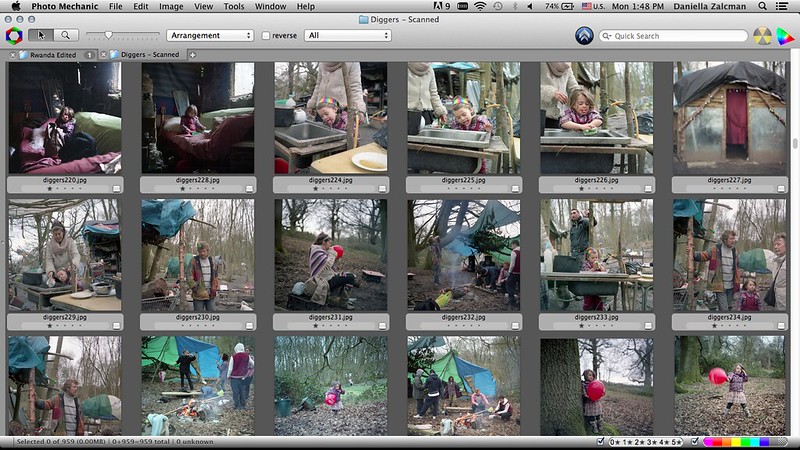
DANIELLA:
The best and worst part of the project is that a little over a month after I first started visiting the village, when they'd been living in this privately owned woodland just outside London for about two years, they were served with an eviction notice. Their encampment is no more than a few hundred meters from the Magna Carta memorial in Runnymede, and June 2015 marked the 700th anniversary of the signing of one of the most important documents in western political history. The Queen was scheduled to show up for the festivities, along with a handful of other heads of state, and I guess someone decided that it would be less than ideal to have a gang of semi-anarchical eco warriors living just up the hill.
It was good, because it meant suddenly this quiet, contemplative photo essay I'd been working on all of a sudden had conflict and a news hook and all those other exciting things you look for in a story — but it was bad because all of a sudden... there was conflict, and a news hook, and I felt intensely stressed about making sure I was there for every major landmark in the legal proceedings. I ended up traveling a lot last fall, and was constantly paranoid that the series of appeals would finally be definitively rejected and bailiffs would show up to haul everyone out while I was on the road.
(I hate saying that the looming destruction of the eco village was "good." It wasn't good at all. You know what I mean.)
Even though the first eviction notice was served in March, various appeals and stays were granted so they managed to stretch their grace period through not only the Magna Carta anniversary, but through the entire summer. I landed at Heathrow sometime in mid September — just a couple miles from Runnymede — and turned on my phone to a barrage of texts and calls from residents telling me that bailiffs had shown up first thing that morning, had dragged them all off the property, and were going through smashing all the benders, the long house, the poly tunnels, everything. I didn't have a camera on me, and wanted to kick myself that I couldn't make it to the last days of the village's existence, but as time has passed I realized that the photos I care about most really have much more to do with the day to day life in this utopian little society; not the images of contractors building a giant fence around the property, or the day they spent in the royal courts of justice in London, or any of the other aggravations of fighting to preserve what had become their home. I wanted to show the home itself.
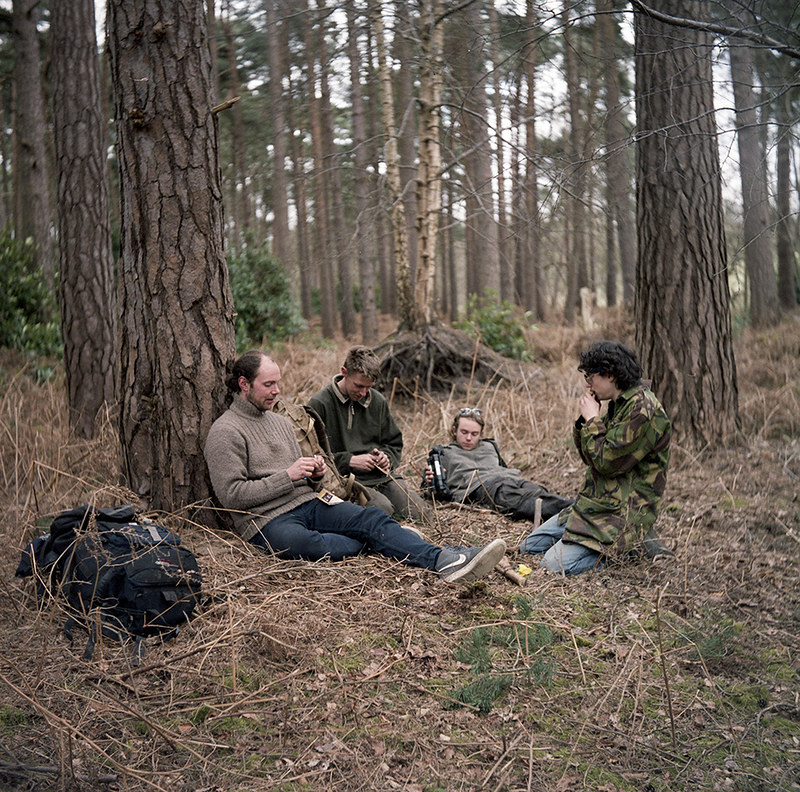
TID:
What have you learned about others from covering projects like this?
DANIELLA:
God, I learned a lot about what things actually constitute "necessities" and what it's like to live in an environment almost entirely devoid of consumerism. I think I'm someone who's naturally suspicious of convention and the status quo, but for most of us that only runs so deep — it was fascinating to be with a group of people who question the underlying reasons for every convention of modern life. What does land ownership really mean, who has the right to natural resources, what is required for human happiness? I have a newfound respect for people who constantly ask those questions.
TID:
What have you learned about yourself?
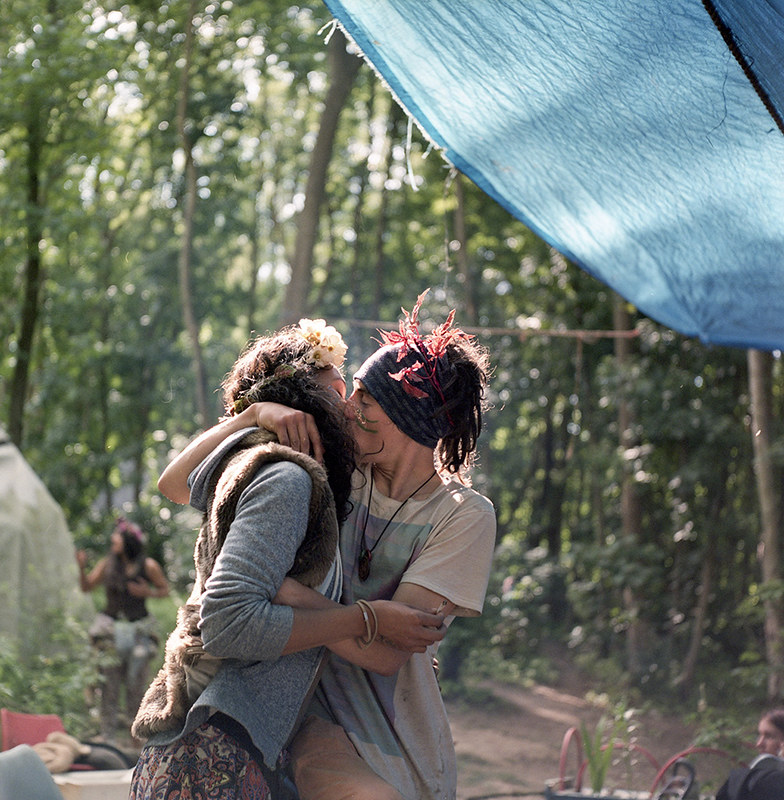
DANIELLA:
I've spent a lot of time recently struggling with what it means to photograph marginalized communities as an outsider — whether that's my right, and if it is, how to be respectful of that responsibility.
I'm always amused how often subjects assume I must be part of their demographic in order to care about their stories — in Uganda, where I've spent several years covering the evolution of homophobia and anti-homosexuality legislation, almost every LGBTI activist I've encountered has at some point asked me if I'm a lesbian. In Canada, where I've spent a lot of time this past year documenting the First Nations survivors of the Indian Residential School system, many of my subjects asked if I was indigenous.
The inverse is that, every once in a while, people from those communities are angry with me for co-opting the narrative of what they feel are their stories. And I get that. I never really had a good answer for those accusations — and really, I'm not comfortable arguing the point.
But those two perspectives are sort of inconsistent — on the one hand, it's not my right to be the voice of a community that isn't my own, but on the other, it's incredible to others that as an outsider I would even care. If raising awareness and shifting mainstream perception is in any way the objective, there often needs to be some third party reassembling old histories and old narratives and presenting them to the public in new ways. So, while I don't think it's my inherent right to photograph any of these stories, I am more comfortable now with my role as middle(wo)man.
And from a completely self-centered point of view — I think this is good for me. I think that really digging into the history and perspectives of a population that is not my own is good for my world view and an important exercise in empathy-building, which I'm worried too many people now actively avoid.
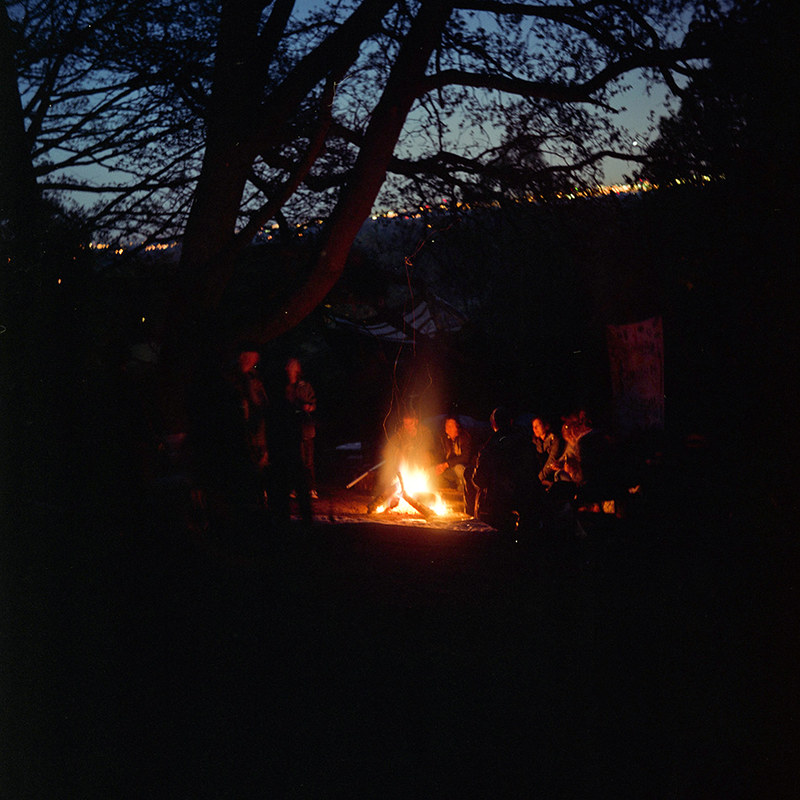
TID:
In conclusion, what advice do you have for photographers who may want to do this type of work?
DANIELLA:
My first piece of advice for any photographer who wants to approach social documentary work is always to put down the camera and talk to your subjects first. More than anything else, I think that's the best way to help people understand that you care about them and their lives first, and your role as a journalist second. After that — be open minded. We all have such particularly crafted world views, rooted in our own experiences and upbringings, and it's sometimes hard to remember that a lot of that is constructed largely at random. I love that I have been able to cover a wide range of communities, each of which has taught me something new and different about being human. I'm worried that sounds platitudinous, but I believe it.
:::BIO:::
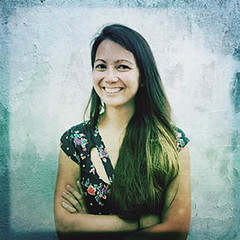
DANIELLA ZALCMAN is a documentary photographer based in London and New York. She began her career while studying architecture as an undergraduate at Columbia University, freelancing for the New York Daily News in between classes. After several years of working as a daily assignment photographer primarily for the NYDN and then for The Wall Street Journal, she moved to London where she now focuses on long term projects that explore the legacies of western colonization. She is a multiple grantee of the Pulitzer Center on Crisis Reporting, and her work has been published in TIME, The Guardian, Al Jazeera America, The Washington Post, and the BBC, among others. She is also the co-founder of @Echosight, a collaborative photography project. You can find her on Instagram and Twitter as @dzalcman.
More of her work can be see here: